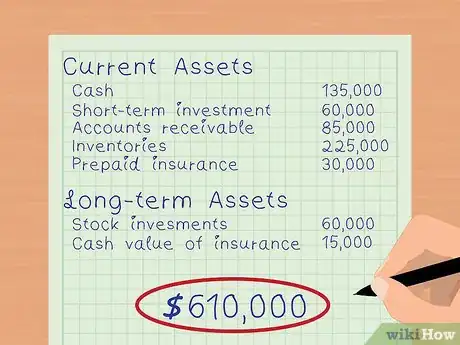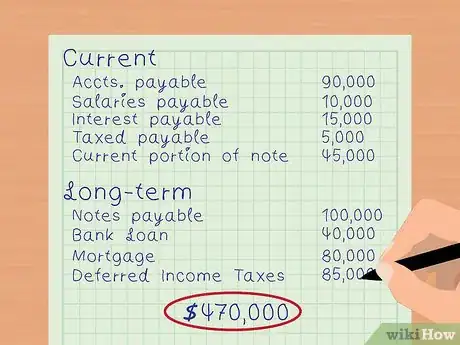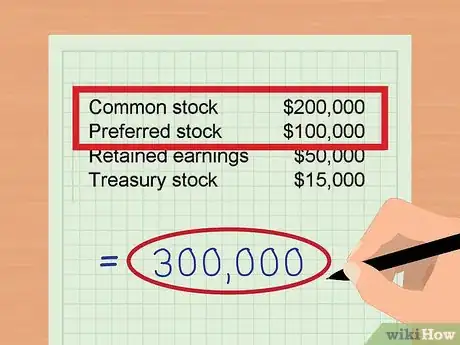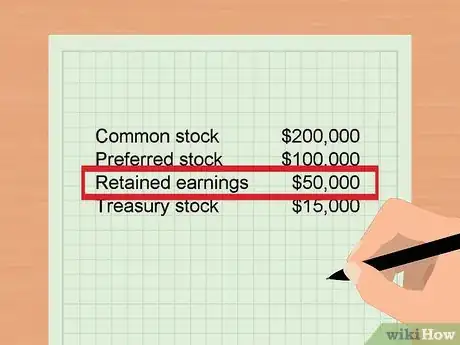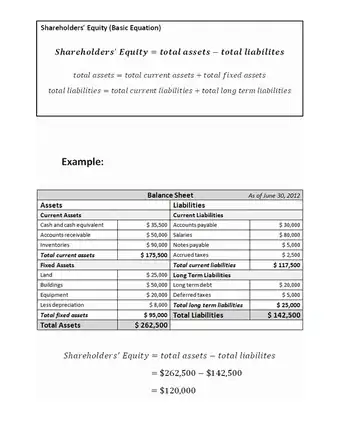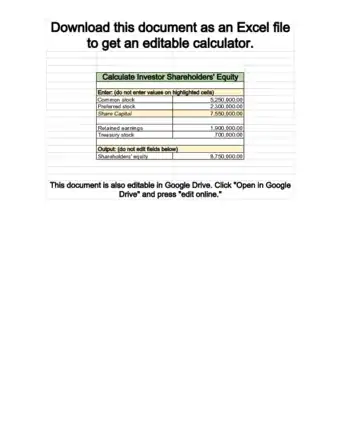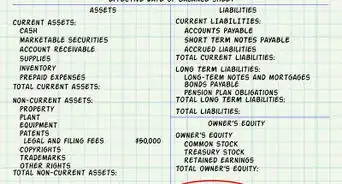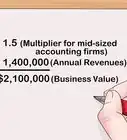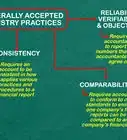This article was co-authored by Jonathan DeYoe, CPWA®, AIF®. Jonathan DeYoe is a Financial Advisor and the CEO of Mindful Money, a comprehensive financial planning and retirement income planning service based in Berkeley, California. With over 25 years of financial advising experience, Jonathan is a speaker and the best-selling author of "Mindful Money: Simple Practices for Reaching Your Financial Goals and Increasing Your Happiness Dividend." Jonathan holds a BA in Philosophy and Religious Studies from Montana State University-Bozeman. He studied Financial Analysis at the CFA Institute and earned his Certified Private Wealth Advisor (CPWA®) designation from The Investments & Wealth Institute. He also earned his Accredited Investment Fiduciary (AIF®) credential from Fi360. Jonathan has been featured in the New York Times, the Wall Street Journal, Money Tips, Mindful Magazine, and Business Insider among others.
There are 9 references cited in this article, which can be found at the bottom of the page.
This article has been viewed 613,311 times.
Shareholders’ equity essentially represents the total net assets of a company.[1] Whether you’re investing and buying stock in a corporation, or are a beginning accountant, learning how to calculate shareholders’ equity is an important financial tool. In accounting, shareholders' equity forms one-third of the basic equation for the double-entry bookkeeping method: assets = liabilities + shareholders' equity.[2] For investors, you can quickly calculate the net worth of a company, making this calculation a critical tool for making an important investment decision. Read on to find out the easiest, most efficient methods of calculating shareholder's equity.
Steps
Subtraction Technique
-
1Determine if you can use this method. In order to use this method, you'll need to know the target company's total assets and total liabilities. If this is a private company, this may be hard to obtain without the direct involvement of management. However, if it is a publicly-traded company, the company is required to report this information in financial reports on their balance sheets.[3]
- To find this information for a publicly-held company, try searching for the company's most recent financial report online. It will be available either on their website or on the Securities and Exchange Commission's website.
-
2Find the company's total asset value. The formula to compute this figure is long-term assets plus current assets. This will include anything owned by the company, from cash and cash equivalents to land and production equipment.
- Long-term assets include the value of equipment, property and capital assets that are going to be in use for more than one year, minus any depreciation of these assets.
- Current assets are defined as any receivables, work in process, inventory, or cash. In accounting terminology, any asset that the company has held for fewer than 12 months is a current asset.
- Sum each category (long term and current assets) first to obtain a value for each and then add the two together to get total asset value.
- For example, imagine a company with current assets totaling $535,000 ($135,000 cash + $60,000 short-term investments + $85,000 accounts receivable + $225,000 in inventory + $30,000 in prepaid insurance) and $75,000 in long-term assets ($60,000 in stock investments + $15,000 in insurance value). Add these two together to obtain $535,000 + $75,000, or $610,000. This value is your total asset value.
Advertisement -
3Establish the company's total liabilities. Like the total asset calculation, the formula for total liabilities is long-term liabilities plus current liabilities. Liabilities include any money that the company is required to pay to creditors, like bank loans, dividends payable, and accounts payable.[4]
- Long-term liabilities are any debts on the balance sheet that don’t require total repayment within a year.
- Current liabilities are the cumulative total of accounts payable, salaries, interest, and any other accounts due within a year’s time.[5]
- Sum each category (long term and current liabilities) first to obtain a value for each and then add the two together to get total liability value.
- For our example imagine that the same company has current liabilities totaling $165,000 ($90,000 accounts payable + $10,000 salaries payable + $15,000 interest payable + $5,000 in taxes payable + $45,000 current portion of note (short-term debt)) and $305,000 in long-term liabilities ($100,000 in notes payable + a $40,000 bank loan + an $80,000 mortgage + $85,000 deferred income tax). Add these two together to obtain $165,000 + $305,000, or $470,000. This value is your total liability value.
-
4Subtract the total liabilities from the total assets.[6] This will give you the shareholders’ equity. This is simply a reorganization of the basic accounting formula: assets = liabilities + shareholders' equity' becomes shareholders' equity = assets - liabilities.[7]
- Continuing with the previous example, simply subtract the company's total liabilities ($470,000) from total assets ($610,000) to get shareholders' equity, which would be $140,000.
Component Technique
-
1Find out if you can use this method. To use this method, you'll need information from target company's shareholders' equity section of the balance sheet or equivalent entries in the general ledger.[8] If it is a publicly-traded company, the company's financial reported are publicly available online.[9] However, if this is a private company, this information may prove hard to obtain without the direct involvement of management.
- Find this information by searching for the company's most recent financial report online. For a publicly-held company, this information will be available either on their website or on the Securities and Exchange Commission's website.
-
2Compute the share capital for the company. Sometimes called equity financing, share capital is the capital that a corporation receives from the sale of stock. Revenue from the sale of both common and preferred stock is considered share capital.[10]
- The figure you use to calculate share capital is the selling price of the stock, not its current market value. This is because share capital represents the money that the corporation actually received from the sale of stock.[11]
- For example, imagine a company with $200,000 raised from common stock and $100,000 from preferred stock. The total share capital, in this case, would be $300,000.
- In some cases, this information may be reported separately as common stock, preferred stock, and paid-in capital in excess of par (or additional paid-in capital). Simply add these components together to obtain the value for share capital.[12]
-
3Verify the retained earnings for the business. Retained earnings are the total profits the company has available after paying its dividend obligations. Retained earnings are then reinvested in the company. In most cases, retained earnings are a much larger portion of shareholders' equity than any other component.[13]
- Retained earnings are generally simply stated as one value by the company. In our example, this value is $50,000.
-
4Confirm the value of treasury shares a company has on its balance sheet. A treasury share is any stock that a company issues and then repurchases in a stock buyback. Alternately, it can be any amount of stock never released to the public for sale.[14]
- Like retained earnings, the value of treasury stock generally requires no calculation. In our example, it is listed simply as $15,000.
-
5Calculate shareholders' equity. Add share capital to retained earnings and then subtract treasury shares to calculate shareholders’ equity.[15]
- Continuing with our example, we would add share capital ($300,000) to retained earnings ($50,000) and subtract our $15,000 in treasury shares to get $335,000 as our shareholders' equity.
Expert Q&A
Did you know you can get expert answers for this article?
Unlock expert answers by supporting wikiHow
-
QuestionWhat does shareholder's equity represent?
 Jonathan DeYoe, CPWA®, AIF®Jonathan DeYoe is a Financial Advisor and the CEO of Mindful Money, a comprehensive financial planning and retirement income planning service based in Berkeley, California. With over 25 years of financial advising experience, Jonathan is a speaker and the best-selling author of "Mindful Money: Simple Practices for Reaching Your Financial Goals and Increasing Your Happiness Dividend." Jonathan holds a BA in Philosophy and Religious Studies from Montana State University-Bozeman. He studied Financial Analysis at the CFA Institute and earned his Certified Private Wealth Advisor (CPWA®) designation from The Investments & Wealth Institute. He also earned his Accredited Investment Fiduciary (AIF®) credential from Fi360. Jonathan has been featured in the New York Times, the Wall Street Journal, Money Tips, Mindful Magazine, and Business Insider among others.
Jonathan DeYoe, CPWA®, AIF®Jonathan DeYoe is a Financial Advisor and the CEO of Mindful Money, a comprehensive financial planning and retirement income planning service based in Berkeley, California. With over 25 years of financial advising experience, Jonathan is a speaker and the best-selling author of "Mindful Money: Simple Practices for Reaching Your Financial Goals and Increasing Your Happiness Dividend." Jonathan holds a BA in Philosophy and Religious Studies from Montana State University-Bozeman. He studied Financial Analysis at the CFA Institute and earned his Certified Private Wealth Advisor (CPWA®) designation from The Investments & Wealth Institute. He also earned his Accredited Investment Fiduciary (AIF®) credential from Fi360. Jonathan has been featured in the New York Times, the Wall Street Journal, Money Tips, Mindful Magazine, and Business Insider among others.
Author, Speaker, & CEO of Mindful Money
Useful Documents
References
- ↑ Jonathan DeYoe, CPWA®, AIF®. Author, Speaker, & CEO of Mindful Money. Expert Interview. 15 October 2020.
- ↑ http://www.accountingcoach.com/stockholders-equity/explanation
- ↑ https://www.sec.gov/divisions/corpfin/cffinancialreportingmanual.shtml
- ↑ http://www.investopedia.com/terms/t/total-liabilities.asp?header_alt=false
- ↑ http://www.investopedia.com/terms/t/total-liabilities.asp?header_alt=false
- ↑ Jonathan DeYoe, CPWA®, AIF®. Author, Speaker, & CEO of Mindful Money. Expert Interview. 15 October 2020.
- ↑ http://www.accountingcoach.com/stockholders-equity/explanation
- ↑ http://www.accountingtools.com/questions-and-answers/how-to-calculate-stockholders-equity.html
- ↑ https://www.sec.gov/divisions/corpfin/cffinancialreportingmanual.shtml
- ↑ http://www.investopedia.com/terms/s/sharecapital.asp?header_alt=false
- ↑ http://www.investopedia.com/terms/s/sharecapital.asp?header_alt=false
- ↑ http://www.accountingtools.com/questions-and-answers/how-to-calculate-stockholders-equity.html
- ↑ http://www.investopedia.com/terms/s/shareholdersequity.asp?header_alt=false
- ↑ http://www.investopedia.com/terms/t/treasurystock.asp?header_alt=false
- ↑ http://www.accountingtools.com/questions-and-answers/how-to-calculate-stockholders-equity.html
- ↑ http://www.investopedia.com/terms/s/shareholdersequity.asp?header_alt=false
- ↑ http://www.investopedia.com/terms/s/shareholdersequity.asp?header_alt=false
- ↑ http://www.jonesday.com/new-pension-funding-and-accounting-rules-barrage-employers-credit-agreement-and-sec-disclosure-impact-10-13-2006/
About This Article
To calculate shareholder’s equity, which represents the amount of a business’s holdings that weren’t purchased using loans, make sure you have access to the company’s total assets and total liabilities to use the subtraction method. To find this information for publicly-held companies, search their most recent financial report online. Once you find this information, you’ll want to add the company’s long-term assets to their current assets to get their total asset value. Then, find their total liabilities by adding their long-term liabilities to their current liabilities. Finally, subtract the total liabilities from the total assets to determine the shareholder’s equity. To learn how to use the component technique to find the shareholder’s equity, keep reading!


